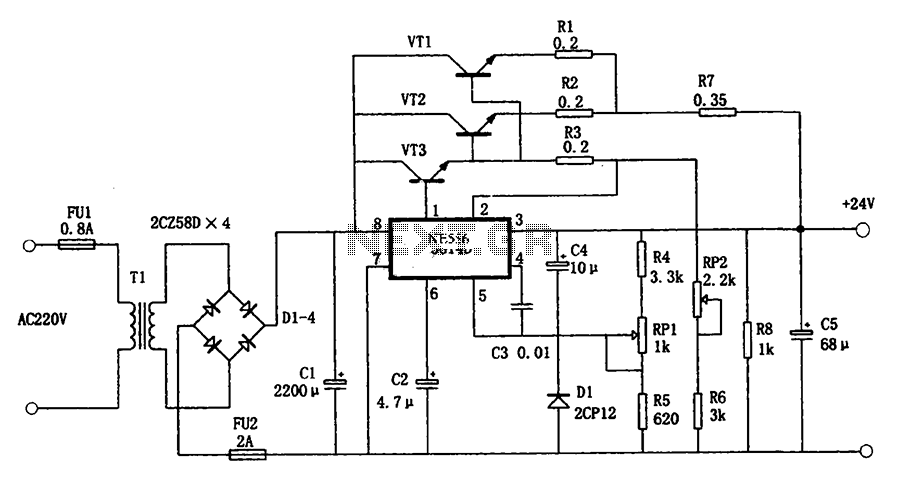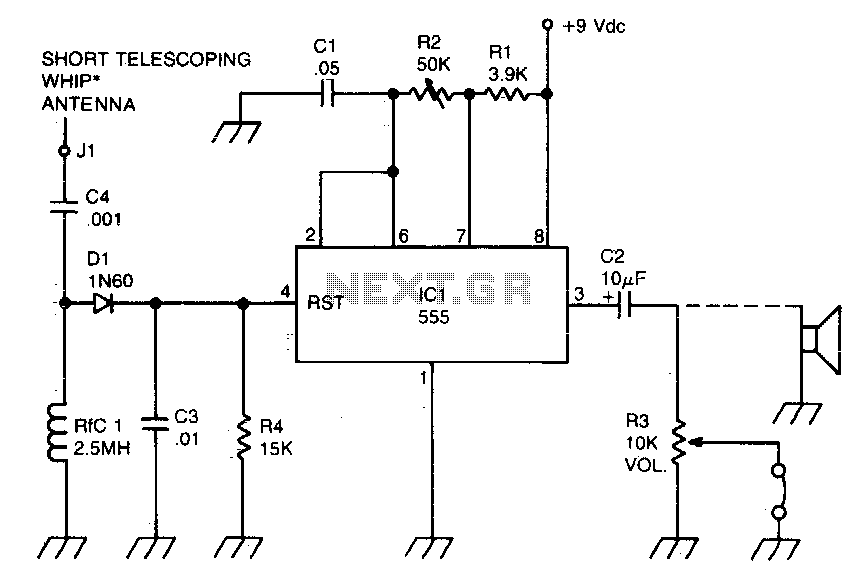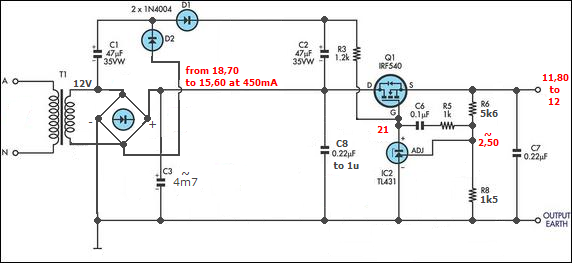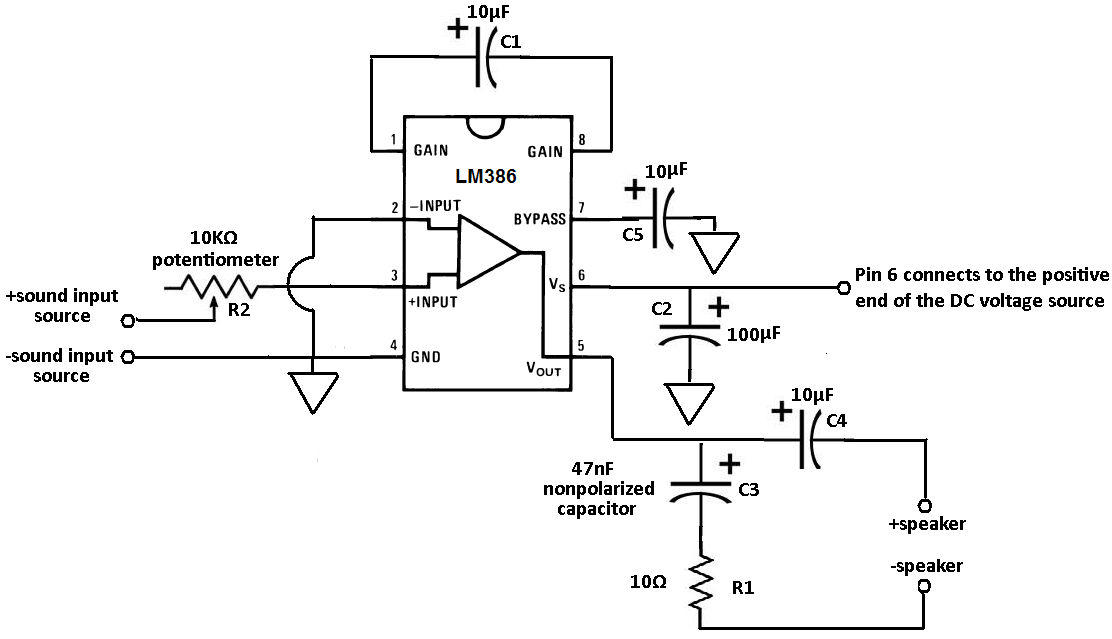
Power Supply For Amplifier

The following circuit illustrates a power supply for an amplifier circuit diagram. Features include ease of construction and adequate electrical response.
The power supply circuit for an amplifier is a crucial component that ensures the amplifier operates effectively. It typically consists of a transformer, rectifier, filter, and voltage regulator.
The transformer steps down the AC voltage from the mains supply to a lower AC voltage suitable for the amplifier. This is followed by a rectifier, which converts the AC voltage to pulsating DC. Commonly used rectifiers include full-wave or bridge rectifiers, which provide a smoother DC output.
Next, the filter stage, often composed of capacitors, smooths the pulsating DC to reduce ripple voltage. This filtering is essential for maintaining a stable voltage supply to the amplifier, as excessive ripple can lead to distortion in the amplified signal.
Finally, a voltage regulator may be employed to ensure that the output voltage remains constant despite variations in load or input voltage. Linear regulators or switching regulators can be used, depending on the requirements for efficiency and heat dissipation.
Overall, the design of the power supply for an amplifier circuit must consider factors such as voltage levels, current requirements, and the overall efficiency of the circuit to ensure optimal performance of the amplifier. Proper layout and component selection are also critical to minimize noise and interference in the audio signal.The following circuit shows about Power Supply For Amplifier Circuit Diagram. Features: Easy to build, supported by an adeguate electric response, make a .. 🔗 External reference
The power supply circuit for an amplifier is a crucial component that ensures the amplifier operates effectively. It typically consists of a transformer, rectifier, filter, and voltage regulator.
The transformer steps down the AC voltage from the mains supply to a lower AC voltage suitable for the amplifier. This is followed by a rectifier, which converts the AC voltage to pulsating DC. Commonly used rectifiers include full-wave or bridge rectifiers, which provide a smoother DC output.
Next, the filter stage, often composed of capacitors, smooths the pulsating DC to reduce ripple voltage. This filtering is essential for maintaining a stable voltage supply to the amplifier, as excessive ripple can lead to distortion in the amplified signal.
Finally, a voltage regulator may be employed to ensure that the output voltage remains constant despite variations in load or input voltage. Linear regulators or switching regulators can be used, depending on the requirements for efficiency and heat dissipation.
Overall, the design of the power supply for an amplifier circuit must consider factors such as voltage levels, current requirements, and the overall efficiency of the circuit to ensure optimal performance of the amplifier. Proper layout and component selection are also critical to minimize noise and interference in the audio signal.The following circuit shows about Power Supply For Amplifier Circuit Diagram. Features: Easy to build, supported by an adeguate electric response, make a .. 🔗 External reference





